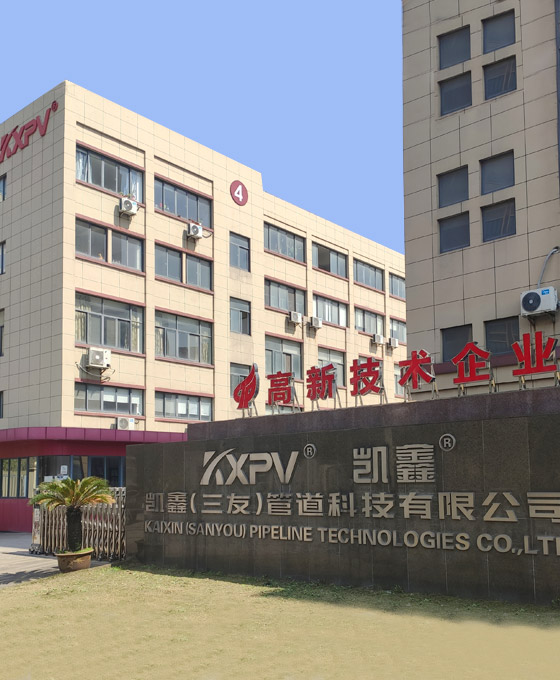CPVC Flange Type Globe Valve DN15-150
Cat:Globe Valve Series
CPVC Flange Type Globe Valve Straight Through High Temperature DN15-DN100 Plastic Valve For Chemical...
See Details
When choosing a plastic valve pipe for corrosive and abrasive applications, it is important to consider several factors to ensure that the material an...
Read MoreOne of the key advantages of plastic pipe fittings, especially materials like PEX (cross-linked polyethylene) and PVC (polyvinyl chloride), is their f...
Read MorePressure Resistance: Plastic pipe fittings, such as those made from PVC, CPVC, and PEX, are designed to withstand varying pressure conditions. PVC and...
Read MoreCorrosion Resistance: Polypropylene Homopolymer (PPH) is renowned for its outstanding chemical resistance, particularly against a wide array of aggres...
Read MoreWhat Is CPVC/UPVC/PVDF/PPH/FRPP Pipe, Valve & Pipe Fitting
CPVC, UPVC, PVDF, PPH, and FRPP are different types of plastic materials used in the manufacture of pipes, valves, and pipe fittings in the plumbing and industrial industries.
CPVC (Chlorinated Polyvinyl Chloride) is a thermoplastic material that is highly resistant to heat, chemicals, and corrosives. It is often used in hot water piping systems and industrial applications.
UPVC (Unplasticized Polyvinyl Chloride) is a durable and low-maintenance plastic material that is widely used in the construction industry for pipes, windows, and doors.
PVDF (Polyvinylidene Fluoride) is a high-performance thermoplastic material that offers excellent chemical resistance and high durability. It is commonly used in harsh chemical environments, such as chemical processing plants.
PPH (Polyphenylene oxide) is a thermoplastic material with high heat resistance and chemical resistance. It is often used in hot water systems, industrial piping, and chemical processing applications.
FRPP (Fiberglass Reinforced Polypropylene) is a composite material that combines the benefits of polypropylene and fiberglass. It offers high strength and durability, making it a popular choice for pipes and fittings in corrosive environments.
Uses Of CPVC/UPVC/PVDF/PPH/FRPP Pipe, Valve & Pipe Fitting
CPVC (Chlorinated Polyvinyl Chloride) is commonly used for hot and cold water distribution, as well as for chemical transportation.
UPVC (Unplasticized Polyvinyl Chloride) is used for cold water distribution, sewage and drainage systems, and also for industrial applications where high strength and low cost are required.
PVDF (Polyvinylidene Fluoride) is used in chemical processing, pharmaceutical and food production, semiconductor fabrication, and power generation due to its high resistance to heat, chemical and UV exposure.
PPH (Polyphenylene) is widely used in chemical and process piping systems, due to its high temperature resistance, chemical resistance and low permeability to gases and liquids.
FRPP (Fiberglass Reinforced Polypropylene) is used in chemical processing and corrosive waste transportation due to its high resistance to corrosive chemicals and high strength.
Valves and pipe fittings made of these materials are also widely used in various industrial and commercial applications.
Function Of CPVC/UPVC/PVDF/PPH/FRPP Pipe, Valve & Pipe Fitting
CPVC (Chlorinated Polyvinyl Chloride) is used in hot and cold water distribution systems, as well as industrial fluid handling.
UPVC (Unplasticized Polyvinyl Chloride) is commonly used in construction for plumbing, rainwater systems, and underground drainage.
PVDF (Polyvinylidene Fluoride) is used for piping and equipment in chemical processing, pharmaceutical, and semiconductor industries due to its chemical resistance and high temperature tolerance.
PPH (Polyphenylene Hydride) is a thermoplastic polymer used in piping systems for chemical processing, water treatment, and food and beverage industries.
FRPP (Fiberglass Reinforced Polypropylene) is a type of plastic piping used in corrosive chemical environments and aggressive fluid handling.
Pipe fittings connect pipes or tubing sections to create a piping system, while valves control the flow of fluid through the system. The specific function of each type of pipe, valve, and fitting depends on the material and intended use, but they all serve to connect, control, and direct fluid flow in various applications.